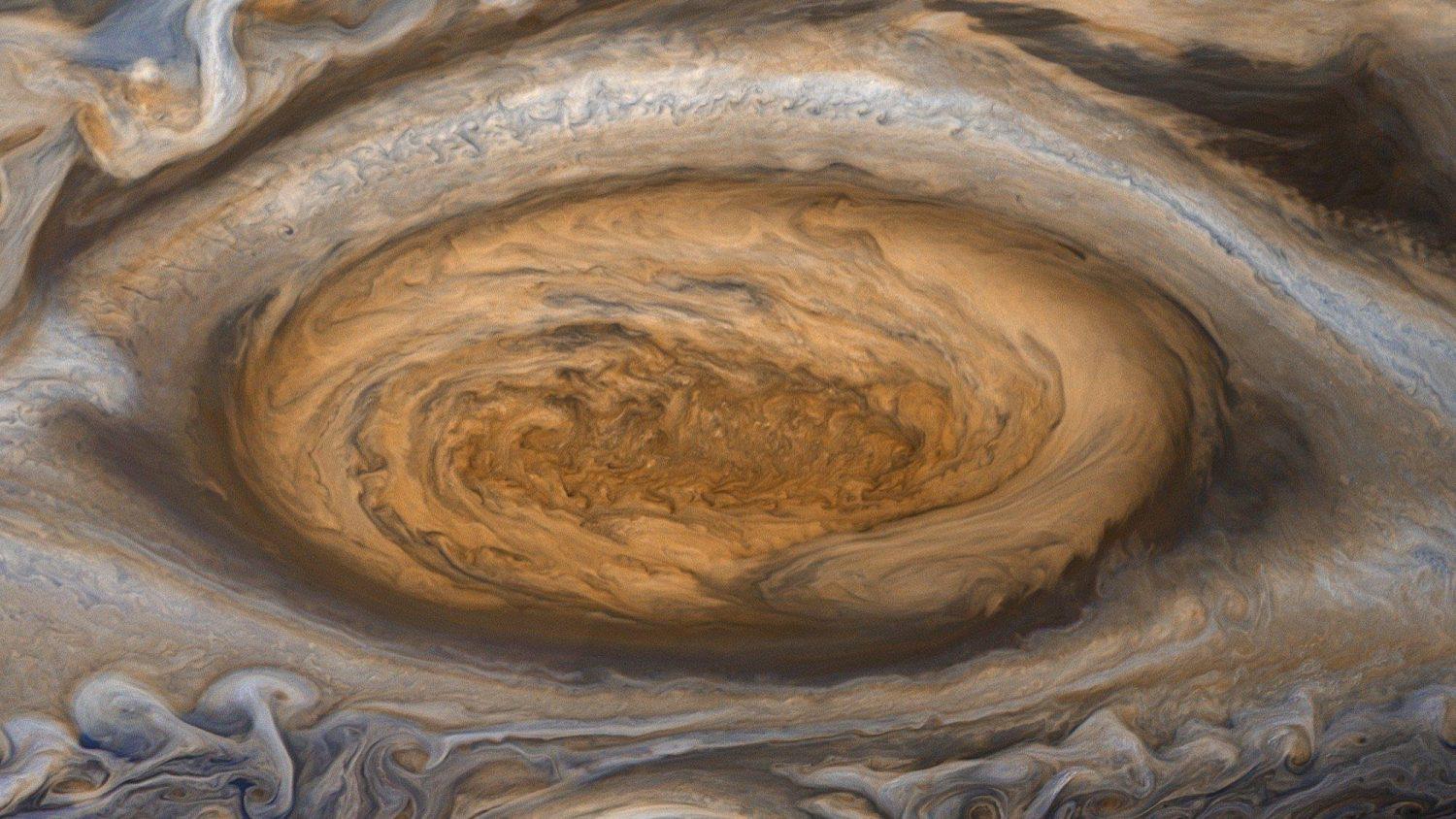Selection of 12 interesting facts about the largest planet in the Solar System
1. Jupiter is the largest planet in the Solar System. Its diameter is 140 thousand km, which is 11 times the diameter of the Earth. Jupiter’s mass exceeds Earth’s by 317 times.
2. Jupiter is a gas giant. Basically it consists of hydrogen and helium, it has no solid surface. The average density of Jupiter is 1.3 g/cm³, which is only a third more than the density of water.
3. As we dive into the depths of the planet, the temperature and pressure increase, and hydrogen gradually changes its state from gas to liquid. Calculations show that at a pressure of about a million atmospheres, hydrogen acquires the properties of a metal. According to the assumptions of scientists, there should be a rock core under a layer of such metallic hydrogen.



4. According to a popular misconception, Jupiter is a “failed star”. But this is not the case. To become at least a brown dwarf, a gas giant would have to weigh about 12.5 times more than it does now, and in order for constant hydrogen-based fusion reactions to start inside Jupiter, it needs to be about 80 times more massive.
5. Jupiter has a large moon family, which is often referred to as a “miniature Solar System”. To date, astronomers know about 69 moons of the gas giant.
6. Jupiter also has a dim ring system. Basically, its rings consist of dark dust particles knocked out by meteorites from the outer moons of the planet.



7. The most famous attraction of Jupiter is called the Great Red Spot. This is a huge anticyclonic storm that has been raging in the atmosphere of the planet for several centuries. It was assumed that Giovanni Cassini was the first to notice it back in 1665. Despite the fact that the storm has noticeably decreased in size over the past 100 years, its diameter still exceeds the diameter of the Earth.
8. Jupiter emits about 60% more energy than it receives from the Sun. Astronomers suggest that this is due to the gradual compression of the planet under the influence of its own gravity.
9. Jupiter has the most extensive magnetosphere among all the planets of the Solar System and the most powerful radiation belts, which pose a serious threat to all spacecraft visiting the vicinity of the gas giant. For example, to protect the electronics of the Juno probe from Jovian radiation, engineers placed it in a titanium cube with walls 1 cm thick.



10. Jupiter is the only planet in the Solar System which common center of mass with the Sun from time to time goes beyond the limits of the luminary (about 7% of its radius).
11. Jupiter’s gravity has a serious impact on the entire Solar System. For example, a gas giant constantly disrupts the orbits of comets, and sometimes captures them. The most famous similar case occurred in 1994. Then astronomers from all over the world could see the bombardment of the planet by debris captured by its gravitational field of comet Shoemaker-Levy 9.
12. Spacecraft heading to the outer part of the Solar System use Jupiter as a “springboard”. A gravitational maneuver in the vicinity of the planet allows them to achieve a significant increase in speed and reduce the flight time to the target. At one time, the “services” of the gas giant were used by Voyager, Ulysses, Cassini and New Horizons missions.
Follow us on Twitter to get the most interesting space news in time
https://twitter.com/ust_magazine
